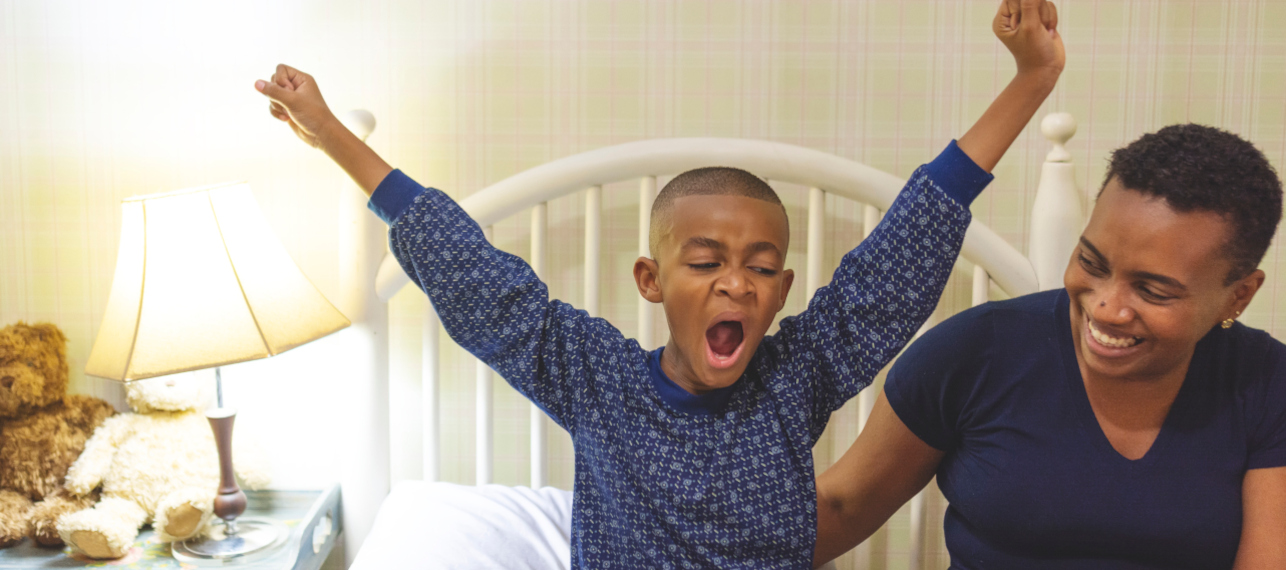I can’t think of a single parent who looks forward to daylight saving time (DST)!
In the United States, DST begins on the second Sunday in March and ends the first Sunday in November. Standard time happens in between those two dates. Whether we’re going from DST to standard time or vice versa, the sentiment about the change is seemingly universal. It’s hard on everyone!
Not to mention, each time we switch the time, we see an uptick in adverse events such as emergency room visits, car accidents, seizures, and migraines, just to name a few.
That’s because our bodies are supposed to interact with the light, and standard time aligns with the sun being directly overhead at noon. Daylight saving time essentially puts us in another time zone without changing the day-night cycle. This misalignment asks our circadian clocks to change our physiological rhythms.
Why Moving One Hour Feels So Impactful
Moving just one hour forward or backward messes with our interaction with the light. In the morning, we’re not supposed to be up when it’s still dark and we’re supposed to have around two hours of darkness before we go to bed (less for toddlers and grade schoolers). So DST is actually impacting two hours – taking away an hour of darkness (when the brain is supposed to be prepping for sleep) and an hour of light in the morning when the sun is telling us to start our day. In fact, if we kept DST year round in the Cincinnati area, sunrise would be after 8 a.m. for more than a third of the year, making it very tough to get going in the morning.
How Daylight Saving Time Affects Circadian Rhythms
When we throw off our interaction with the sun, we disrupt our circadian and physiological rhythms. We’ll explain to kids that their bodies have an internal battery and an internal clock. Their internal batteries tell them when they’re tired. Their internal clocks tell them when it’s time to sleep. If their batteries are tired, but their clocks aren’t, it makes it difficult to sleep. So essentially, daylight saving time leads to a circadian rhythm mismatch and ultimately poorer quality of sleep.
Why It’s So Hard on Teens
In general, teens aren’t getting enough sleep, so they’re already at a disadvantage when DST changes arrive. Further, their circadian clocks are naturally set for staying up later and sleeping in later compared to younger kids, but their early school start time stays the same. So, moving their wakeup time an hour earlier relative to sunrise during DST means they’ll miss out on an hour of sleep and will therefore feel even more sleep deprived.
How to Help Kids Adjust to Daylight Saving Time Changes
No matter what age their kids are, parents ask me what can be done to help them adjust to the different time changes. Here are some recommendations to lessen the impact of the clocks moving forward or backward:
- Gradually adjust their bedtime
One of the most impactful ways to help kids adjust to the time change is to incrementally move their bedtime. About a week before the fall back or spring forward date, begin moving their bedtime backward or forward by 15 minutes each day. This will help their internal clocks adjust gradually. DST changes are more difficult in the spring because we lose an hour of sleep. If possible, I recommend starting DST on a Friday, that way they have the weekend to get used to it. - Or, ignore it all together
If your kids are younger and don’t have to be somewhere before the sun comes up in the mornings, I would recommend ignoring the time change all together. There’s no good reason to deprive them of sleep! - Limit blue light exposure
Limiting blue light from phones, tablets and computers won’t necessarily help with the DST transition, but it helps their brains prepare for sleep. We recommend turning screens off 1-1.5 hours before bedtime because the blue light prevents the release of melatonin, essentially making their brains think that it’s still daylight. This in turn pushes their sleep cycle even later.
It’s important to note that most phones have a nightshift mode, but in general these aren’t powerful enough. And similarly, turning down the brightness isn’t enough either. Neither method blocks the blue light emitted from screens. - Encourage good sleep hygiene
Having poor sleep hygiene can make existing symptoms worse when DST changes arrive. We encourage kids to have a consistent bedtime. Keep their rooms cool and dark. Limit things like drinks, sugar and caffeine before bed. And no homework in bed – retrain their brains to associate it with sleeping only!
To learn more about our Sleep Center, please call 513-636-1077 or fill out an online form for more information.


